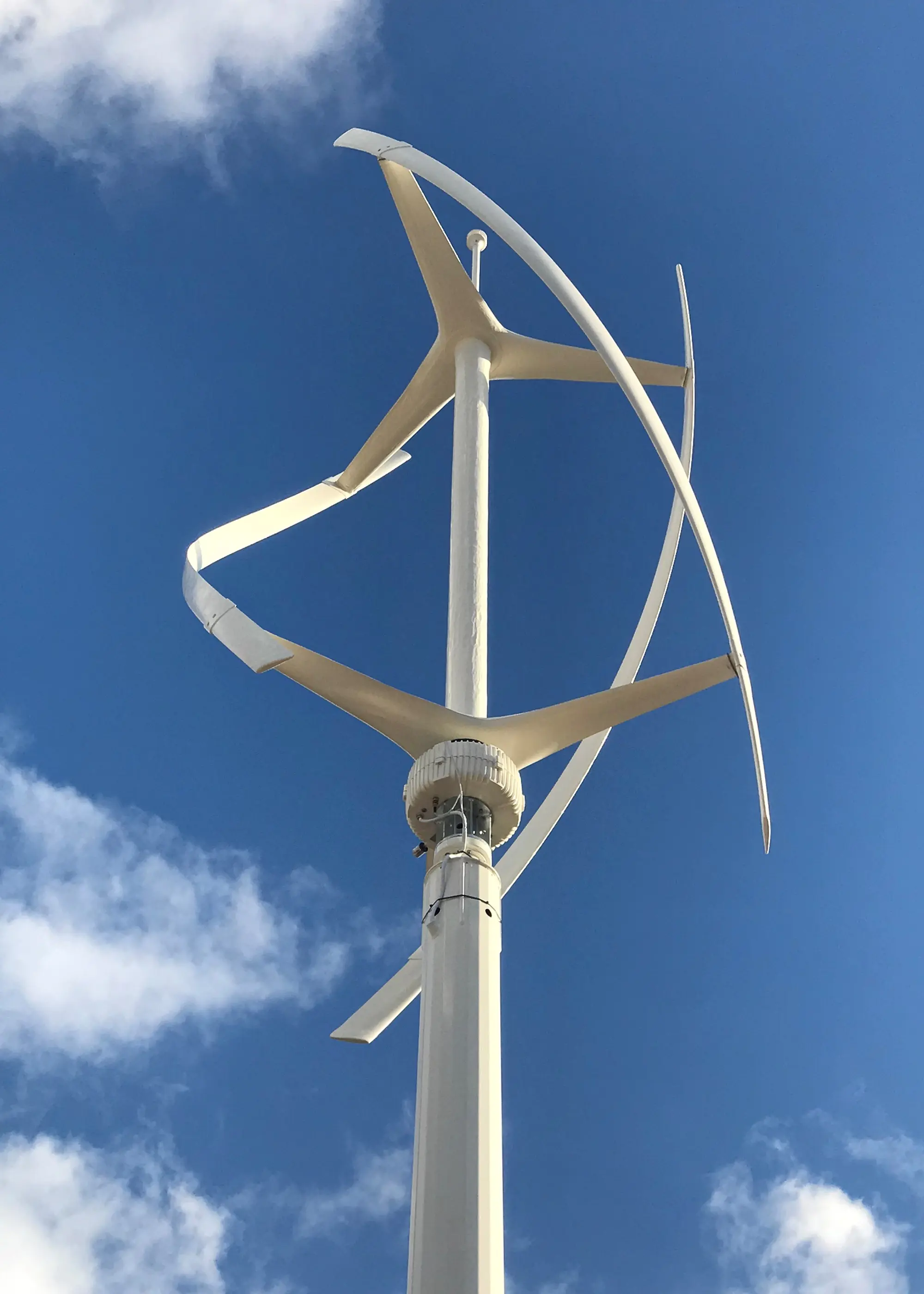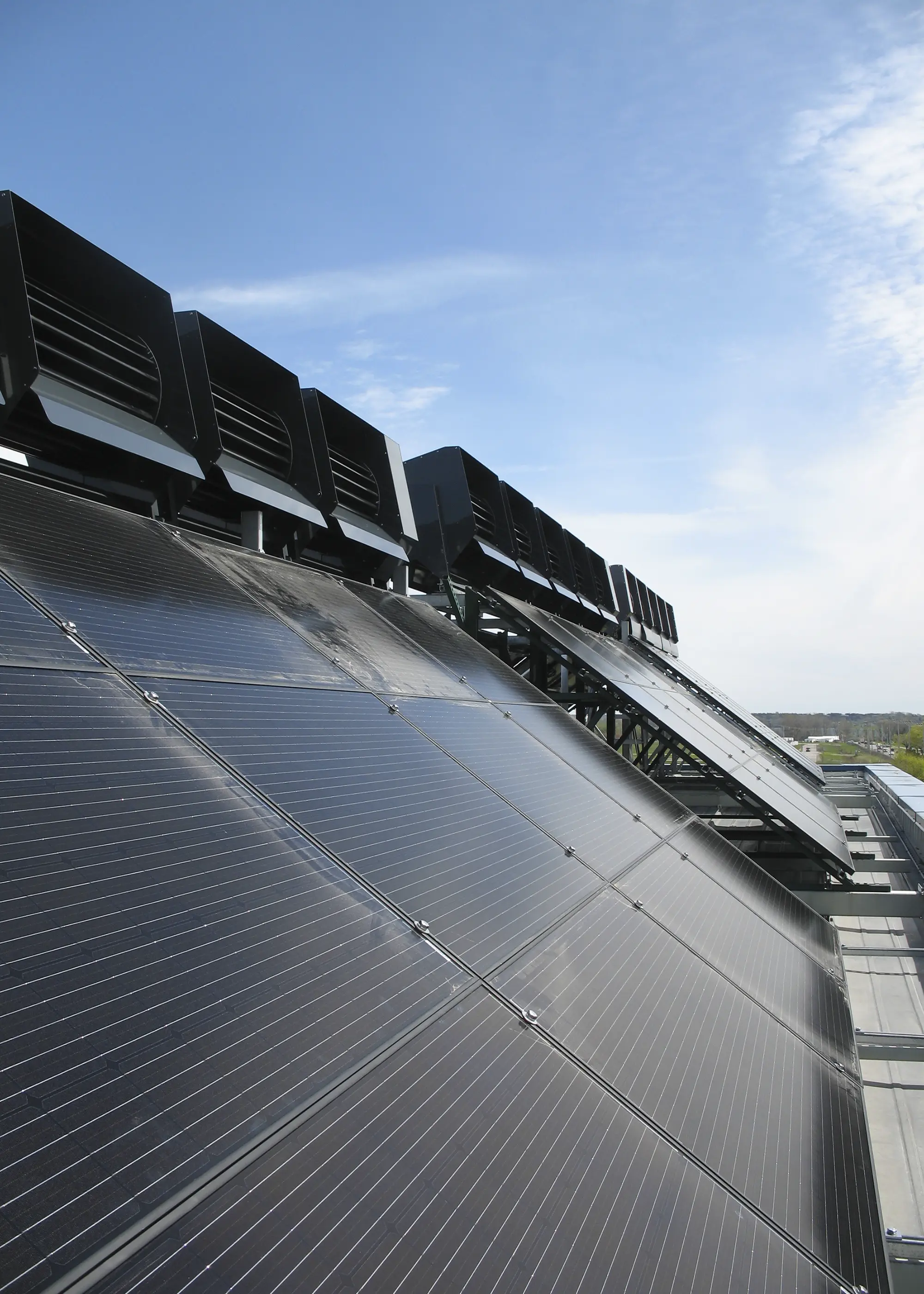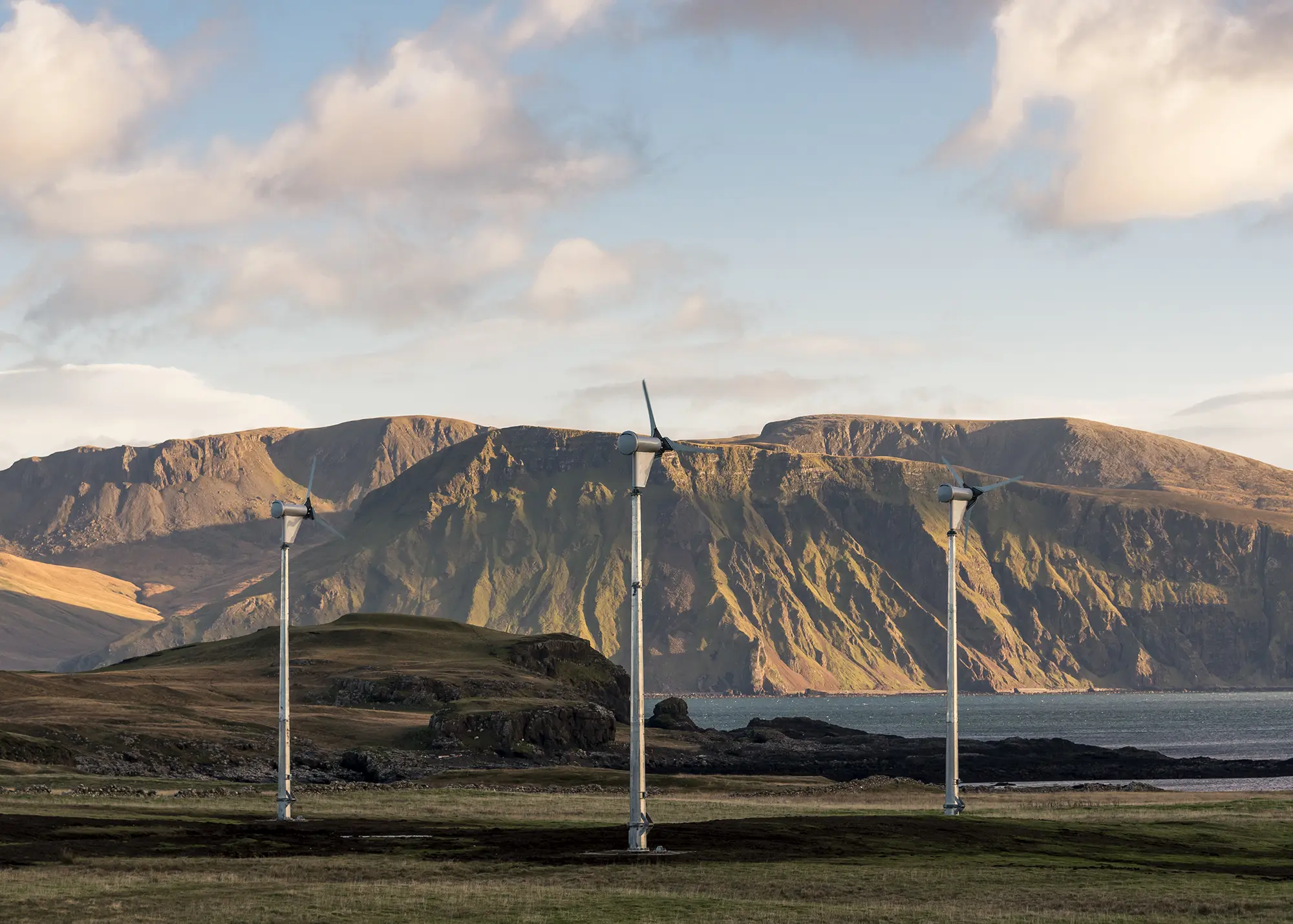
Use code BUILD for 20% off
Book here!
Use code BUILD for 20% off
Book here!Wind has been used to generate power in the UK for many centuries. Like solar photovoltaic (PV) systems (and in contrast to fossil fuels) wind turbines generate electricity from a clean and renewable source of energy. As a power source it suffers from being intermittent – the wind doesn’t always blow, so don’t expect to power your home 100% from a wind turbine. However, although output is intermittent, it isn’t seasonal so (unlike PV) wind can produce good output in winter.
Many people associate small and micro wind turbines with their larger cousins on wind farms, which have been the source of some controversy. That’s in part due to noise, but mostly due to their visual impact on the surrounding landscape. Small wind turbines produce very little noise and, although they will still be visible, they don’t have anything like the impact of larger wind turbines.
Installed capacity in the UK is still very low at domestic level compared to PV, largely because only a limited number of properties are suitable (but see the final section on community wind turbines). Whether you can make use of a wind turbine will mostly depend on your home’s location. This is because you need to consider:
But first, some basics…
While commercial wind farm turbines are over 1MW (megawatt) each, domestic-size turbines can vary from under 1kW (kilowatt) to 25kW (maximum power output at any one moment). In case your Greek is rusty, there are 1,000 kW in a MW, so a 1kW turbine would produce only 1/1,000th of the power from a 1MW turbine.
‘Small’ turbines are generally those in the range of 2.5kW-25kW. This defines the maximum power output when the wind is blowing just right (ie not too slow and not too fast). ‘Mini’ or ‘micro’ wind turbines are even smaller than this, in the range 0.5kW-2.5kW, although definitions vary according to who you read. For comparison, a typical domestic PV installation might have a peak output of 4kW.
The amount of power produced per annum varies according to size, of course, but bigger is better. A 1kW turbine might only produce 800kWh per annum, a 2.5kW version might produce 3,500kWh, and a 6kW install on a good site should produce 9,000kWh per annum.

The QR6 vertical axis wind turbine from VWT Power is designed, developed and manufactured in the UK
Micro wind turbines can be building-mounted, but not all properties are structurally suitable for mounting them this way. Chimneys are very exposed and mortar erodes over time. Even gable ends can be unstable depending on construction, age and condition, so a weak or defective building should be checked carefully and advice from a structural engineer sought, if needed.
Small wind turbines (ie over 2.5kW) are usually independently mounted on poles. They need to be sited sufficiently high and far away from obstacles to avoid turbulence. They are therefore only suitable for houses with sufficient land but are very useful in rural areas. Some turbines require guy ropes to provide stability and therefore have quite a significant footprint.
Horizontal axis wind turbines (HAWTs) have blades like a propeller. They look like mini versions of what you see on wind farms. Vertical axis wind turbines (VAWTs) are less common in the UK although they do have some advantages in terms of performance at low wind speeds, and they are known to be quieter. They are also more efficient than horizontal axis turbines in locations where there is more turbulence. Independently mounted VAWTs also have a lower footprint on the ground.
The makers of the larger 3-phase QR6 vertical axis wind turbine (VWT Power) are planning to release a 1kW single-phase VAWT this year. This will be much more applicable to the domestic market and will have the added advantage (in terms of sustainability) of being made in the UK by an ISO-approved engineering company.

The RidgeBlade system has small turbines mounted to the top of the roof, which gives a more subtle appearance than alternatives. This system is due to be available in the UK later this year
A recent innovation in wind turbines should also be available in the UK later this year. The Ridgeblade turbine is mounted along the ridge of a pitched roof, and this has several advantages. Although there is a modest increase in ridge height, the visual effect is not as obvious as a pole-mounted turbine, making it potentially much more acceptable to planning authorities. The output figures predicted are substantial so, on the face of it, this could be a very useful domestic generation technology.
As wind is an intermittent resource, you can get the most out of a micro turbine by including battery storage within the system. That way, when there is more power being generated than you are using, you can store the energy for when the wind is not so strong. Batteries add to the cost of a generation system and also to its environmental impact, but they are becoming increasingly popular as a means of reducing reliance on the grid.
Unless you’re completely off grid, excess electricity production can also be sold to the grid, through the Smart Export Guarantee (SEG) scheme, based on readings from your export meter. The amount paid per kWh exported is far less than we are all currently paying for our electricity, and it varies between different energy providers.
FAQ Where is the best location for a domestic wind turbine system?Micro wind turbines are not normally considered to be viable unless the average wind speed exceeds 6 metres per second (6m/s). The ideal site for a wind turbine would be at the top of a smooth hill with no buildings, no trees, and in an area of good wind resource (hills with sudden changes in height create turbulence). Wind speed varies widely across Britain. Data on wind speeds for every part of the country is available from the NOABL database – which is currently available through RenSmart. Speeds are quoted at a height of 10m, which is much higher than that at which an average building-mounted turbine will be located, so the figures must be treated with some caution, as wind power increases rapidly with height. The given speeds also take no account of turbulence thrown up by buildings, trees and other obstructions. Areas with higher average wind speeds may still be unviable if there is significant turbulence in the location selected. A report into performance of mini wind turbines by the Energy Saving Trust emphasised that the output is highly sensitive to location and local wind speeds, and states: “The NOABL database was found to significantly overestimate the wind resource at urban sites. It should not be used for wind speed estimation unless the site is very remote.” Annual output figures quoted by manufacturers in terms of kilowatt hours will of course be making certain assumptions about local wind speed and conditions, so, many sites can be expected to produce much less than the quoted figures. It’s vital to do your research carefully (including looking at Trustpilot) and look for independently verified data or CE marking. |
Whether or not domestic wind turbines need planning permission is not consistent throughout the UK. In Scotland and Wales, consent is required for building-mounted turbines. In England, building-mounted wind turbines are covered by permitted development (PD) rights, but only if a long list of conditions are met.
These include height, distance from boundaries, size of turbine, sensitivity of the site (eg listed buildings or conservation areas) and the materials used for the blades. A similar set of PD restrictions are in force for independent pole-mounted turbines in England and Wales (not Scotland). The conditions also include a requirement that there should not be a heat pump already at the property.

The Isle of Canna is a small island in Scotland, where the 15 inhabitants use wind turbines from SD Wind Energy to produce 98% of their power
Oversight by building control would certainly be required wherever a significant alteration is being made to the structure of a building. However, approval is not necessarily required for free-standing wind turbines. The situation is not 100% consistent throughout the UK, but your turbine installer should be able to clarify the current position on building control requirements in your area for the type of installation selected.
Accreditation for micro-renewables in the UK is covered by the Microgeneration Certification Scheme (MCS). To be eligible for certain subsidy schemes (eg the social housing decarbonisation fund, SHDF) you are required to use products and installers which are certified through this scheme. However, there are currently only three accredited wind turbines on the MCS database (all 3kW or over) and none of these are micro turbines, ie building mounted.
If your home just isn’t suitable for a mini wind turbine, you might consider investing the equivalent sum of money in a local wind co-operative and opting for a medium-sized turbine with an output of over 5kW. Shared schemes normally involve setting up an ESCO (Energy Services Company) through which the source of energy can be purchased and managed, and costs can be allocated.
Due to economies of scale, it is quite possible that you might get a better financial return and a greater reduction in environmental impact for the same total investment. Working with a co-operative also means that you can select a site with a better wind resource than your own property to ensure maximum efficiency.
